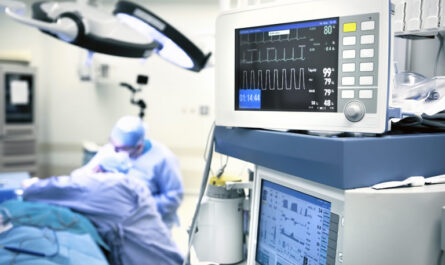
Introduction to Retinal Imaging
The retina is the light-sensitive layer lining the back of the eye. As light passes through the lens of the eye, an image is projected onto the retina. Retinal imaging devices allow ophthalmologists to visualize the retina and diagnose eye diseases. Over the years, retinal imaging has moved from crude retinal cameras to advanced digital systems that can capture high-resolution images. Let’s take a look at some of the modern retinal imaging technologies revolutionizing eye care.
Fundus Photography
One of the earliest retinal imaging methods is fundus photography. A fundus camera uses a low-powered lens and bright LED or halogen lights to illuminate theretina. It takes 2D color photographs of the retinal blood vessels, optic nerve, macula, and peripheral retina. Fundus photography is still commonly used to monitor diseases like diabetes, monitor treatment response in retinal diseases and compare changes over time. However, its static 2D images have limitations in detecting subtle lesions compared to newer modalities.
Optical Coherence Tomography
Optical coherence tomography (OCT) is a non-invasive imaging technique that produces high-resolution cross-sectional images of the retina. An OCT machine uses low-coherence interferometry to capture backscattered light. It analyzes the echo delay and amplitude of the reflected signals to generate digital tomographic scans of micrometer resolution. OCT provides depth resolution to visualize the layered structure of the retina. It is invaluable in diagnosing and managing retinal diseases like age-related macular degeneration, diabetic retinopathy, macular edema and glaucoma. Some advanced OCT systems can perform optical biopsies, angiography and help in pre- and post-surgical evaluation.
Fundus Autofluorescence
Fundus autofluorescence imaging detects the natural fluorescence from molecules in the retina called lipofuscin. An optically filtered fundus camera captures autofluorescence emitted from the retinal pigment epithelium and identifies areas of abnormal accumulation or loss of lipofuscin. It helps detect macular pathologies like Stargardt’s disease, Best disease, age-related macular degeneration and can monitor treatment response. Fundus autofluorescence provides a functional evaluation of the RPE in addition to standard anatomy on OCT or fundus photographs. It highlights abnormalities often invisible on other modalities.
Fundus Fluorescein Angiography
Fluorescein angiography allows clinicians to visualize the blood circulation in the retinal vessels. After intravenous injection of sodium fluorescein dye, a filtered angiographic fundus camera captures real-time images of the passage of dye through the retinal and choroidal circulation. It highlights vascular leakage, nonperfusion, ischemic areas that aid diagnosis of conditions like retinal vascular occlusions, uveitis, diabetic retinopathy. Sometimes indocyanine green dye is used instead for choroidal imaging. In recent years, FA has been replaced to some extent by advanced non-invasive technologies like OCT angiography. But dye angiography still provides the highest resolution for certain scenarios.
Retinal Imaging Devices in the Future
Researchers are continually developing new retinal imaging technologies to improve early detection, monitoring and management of retinal diseases. Adaptive optics systems correct for optical aberrations in the eye to achieve microscopic resolution. Spectral domain OCT provides ultra-high speed volumetric scans. Swept-source OCT breaks barriers of penetration depth. Multicolor and polarization-sensitive imaging are being investigated. Handheld portable wide-field fundus cameras and smartphone-based retinal screening devices aim to widen access to retinal evaluation. Artificial intelligence is being integrated in retinal analysis to perform automated screening, real-time disease diagnosis and tracking of treatment response.
Conclusion
In conclusion, retinal imaging has come a long way from crude retinal cameras to advanced digital imaging systems. Modern devices offer high resolution, wide field, cross-sectional, functional and molecular imaging capabilities. They provide valuable anatomical and physiological information helpful in diagnosis, management and research of retinal pathologies. With ongoing technological advancements, retinal imaging promises to revolutionize eye care delivery and help achieve the goal of screening every patient and catching diseases early for improved outcomes.


